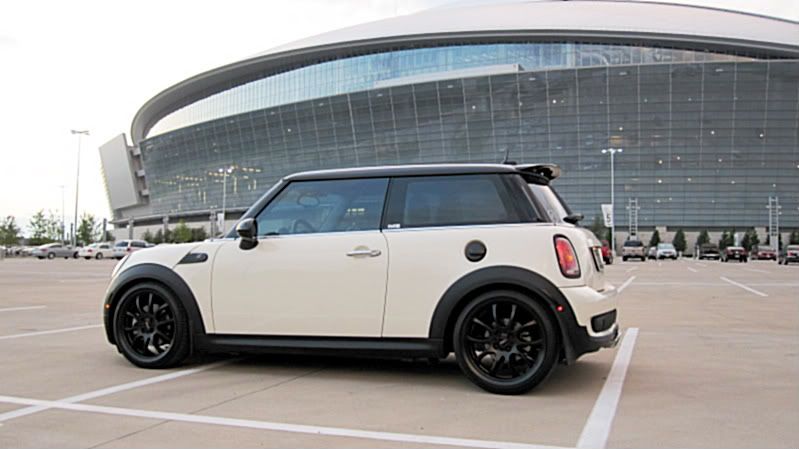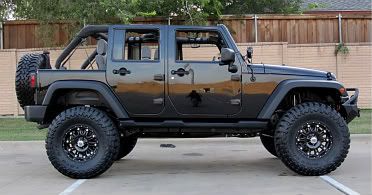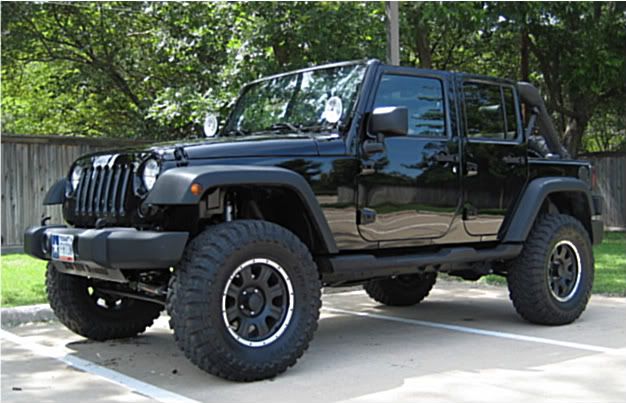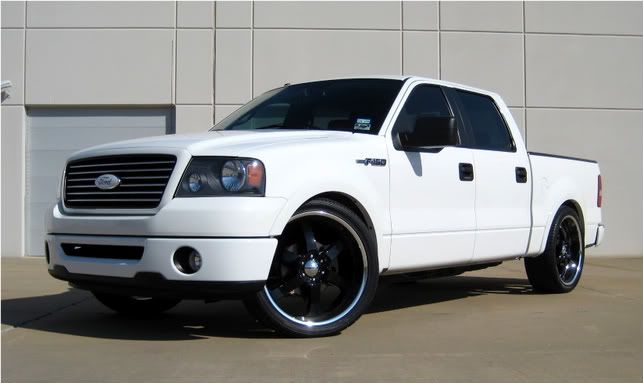Going from 18's to lightweight 17's worth the trounle?
#1
Join Date: Aug 2010
Location: Fort Worth TX
Posts: 131
Likes: 0
Received 0 Likes
on
0 Posts
Going from 18's to lightweight 17's worth the trouble?
I'm thinking about selling my JCW R105's with brand new Nitto Neo Geens 215/35/18 and getting some lightweight (15-16 lbs) 17" wheels. Would the 9 pound loss per wheel/tire make a big difference in how my car performs? If not them I don't want to go through all the trouble. Who has done this? Did you notice improved ride, acceleration, corning and braking?
my current set up

Wheels I'm looking at


my current set up

Wheels I'm looking at


Last edited by NeverEnuff; 10-15-2010 at 07:12 AM.
#3
6th Gear
iTrader: (8)
R105 = 23.3 lbs
Ultraleggera = 16
7.3 lbs.
You are doing a 292lb. weight reduction
Ultraleggera = 16
7.3 lbs.
Sprung Weight
Sprung weight is the weight supported by the springs. For example: the vehicle's body, frame, motor, transmission, interior, fuel, and passengers would be sprung weight. A simple concept to grasp. Basically, the sprung weight of the car is the car's mass as seen to the suspension components.
Unsprung Weight
This is one of the most critical factors affecting a vehicle's road holding ability. Unsprung weight is that portion of a vehicle that is not supported by the suspension (i.e. wheels, tires and brakes) and therefore is the most susceptible to road shock and cornering forces. By reducing unsprung weight, alloy wheels provide more precise steering input and improved "turning in" characteristics. So what. SO WHAT!? This is a key concept that many people overlook. We have been telling you for a long time now to get light weight wheels and tires. Here's how it all comes together.
Every time you hit a bump, the wheel assembly is accelerated upwards, decelerates to a stop, then accelerates downward till it reaches equilibrium. If the wheel can’t accelerate fast enough, shock is transmitted to the body, which may upset the balance of the car. A s an example think of small, sharp edged speed bumps versus those gigantic, but wide, monsters in some lots. The sharp edged ones are much more annoying to traverse, aren’t they? That’s because they require the suspension to accelerate more rapidly. Now imagine going over some stutter bumps in a corner. You’ll have a very rapid series of accelerations and decelerations. If the wheel is lighter, it will accelerate upwards and downwards faster (a=F/m). This means it will follow the road better and, even more importantly, it will allow the suspension to work better. The shock and spring will have to control less unsprung weight/mass, which means they can stop and start the motion of the assembly easier and at a rapid pace.
Why Reduce Unspring Wieght?
Reducing unsprung weight minimizes the load placed on controlling the motion of the wheels and tires. This means that suspension springs and shock absorbers will have a greater reserve capacity to control body motion -- just as they were intended to! The result is better handling, which we, as tuners, are all after.
Rotational inertia is a concept a bit more difficult to deal with than unsprung weight. Inertia can be thought of as why a car wants to keep rolling once moving, or remain in place once stopped (unless you forget to set the parking brake on that hill). I believe the terms momentum and inertia are interchangeable. The term “flywheel effect” also refers to these concepts. In a car, there are a number of rotating masses which require energy to accelerate. Up front, ignoring the internal engine components like the crankshaft, we have to worry about the flywheel, clutch assembly, gears, axles, brake rotors and wheel/tire. Out back its a little simpler (for FWD) with just the brakes and wheel/tire contributing most of the mass.
The more mass an object has, the more energy it takes to accelerate it. To accelerate a rolling object such as a wheel, you must both accelerate its mass plus overcome its rotational inertia. As for braking, you must overcome its rotational inertia plus decelerate its mass. By reducing the weight of the vehicle's rotational mass, lightweight wheels provide more responsive acceleration and braking.
Before continuing with our informal analysis here, I want to point out something very important about rotational inertia. We’ve all seen the ice skating move where the skater starts spinning. She pulls her arms in and speeds up, then extends them again and slows down. Why is this? Well, the further a mass is from the center of rotation, the faster it must travel for a given angular speed (how many degrees of an arc it traverses per time unit). The faster anything moves, the more energy it has, so when the arms are pulled in, conservation of energy says that the rotation rate must increase due to equal energy being applied to the same mass over a smaller diameter. Applying this to wheels and tires, which have most of their mass spread as far as possible from the rotation center, I think you’ll agree that it naturally takes more energy to accelerate them. Example: Take a two identical masses, but one is a solid disk of diameter D, the other is a ring of diameter 2D. The ring will require more force to accelerate it (in a rotational manner). Therefore a heavier rim with a smaller diameter could have less rotational mass than a lighter rim of a larger size, and accelerate faster with the same force applied.
The effect of rotating mass can be calculated using Moment of Inertia (MOI). MoI is related to not only the mass of the rotating object, but the distribution of that mass around the rotational center. The further from the center, the higher the MoI. The higher the MoI, the more torque required to accelerate the object. The higher the acceleration, the higher the torque required.
Because of this, the weight of rotating mass such as wheels and tires on a car have a bigger effect on acceleration than static weight such as on the chassis on a car. When purchasing new wheels and tires for a performance car, it can be useful to compare the effects of different wheel and tire combinations. This is especially true when considering upgrading to larger wheels or tires on a car.
The use of light-weight alloys in wheels reduces rotational mass. This means that less energy will be required to accelerate the wheel. Given that each pound of rotational mass lost provides an equivalent performance gain as a 10 pound reduction in vehicle weight, the benefits of light alloy wheels on vehicle performance cannot be overlooked.
For example:
A reduction in the weight of the rim/tire assembly of 5lbs x 4 (all around the car) is equivalent to a 200lb weight reduction in vehicle weight (thats worth 0.200 in the 1/4 mile)
Sprung weight is the weight supported by the springs. For example: the vehicle's body, frame, motor, transmission, interior, fuel, and passengers would be sprung weight. A simple concept to grasp. Basically, the sprung weight of the car is the car's mass as seen to the suspension components.
Unsprung Weight
This is one of the most critical factors affecting a vehicle's road holding ability. Unsprung weight is that portion of a vehicle that is not supported by the suspension (i.e. wheels, tires and brakes) and therefore is the most susceptible to road shock and cornering forces. By reducing unsprung weight, alloy wheels provide more precise steering input and improved "turning in" characteristics. So what. SO WHAT!? This is a key concept that many people overlook. We have been telling you for a long time now to get light weight wheels and tires. Here's how it all comes together.
Every time you hit a bump, the wheel assembly is accelerated upwards, decelerates to a stop, then accelerates downward till it reaches equilibrium. If the wheel can’t accelerate fast enough, shock is transmitted to the body, which may upset the balance of the car. A s an example think of small, sharp edged speed bumps versus those gigantic, but wide, monsters in some lots. The sharp edged ones are much more annoying to traverse, aren’t they? That’s because they require the suspension to accelerate more rapidly. Now imagine going over some stutter bumps in a corner. You’ll have a very rapid series of accelerations and decelerations. If the wheel is lighter, it will accelerate upwards and downwards faster (a=F/m). This means it will follow the road better and, even more importantly, it will allow the suspension to work better. The shock and spring will have to control less unsprung weight/mass, which means they can stop and start the motion of the assembly easier and at a rapid pace.
Why Reduce Unspring Wieght?
Reducing unsprung weight minimizes the load placed on controlling the motion of the wheels and tires. This means that suspension springs and shock absorbers will have a greater reserve capacity to control body motion -- just as they were intended to! The result is better handling, which we, as tuners, are all after.
Rotational inertia is a concept a bit more difficult to deal with than unsprung weight. Inertia can be thought of as why a car wants to keep rolling once moving, or remain in place once stopped (unless you forget to set the parking brake on that hill). I believe the terms momentum and inertia are interchangeable. The term “flywheel effect” also refers to these concepts. In a car, there are a number of rotating masses which require energy to accelerate. Up front, ignoring the internal engine components like the crankshaft, we have to worry about the flywheel, clutch assembly, gears, axles, brake rotors and wheel/tire. Out back its a little simpler (for FWD) with just the brakes and wheel/tire contributing most of the mass.
The more mass an object has, the more energy it takes to accelerate it. To accelerate a rolling object such as a wheel, you must both accelerate its mass plus overcome its rotational inertia. As for braking, you must overcome its rotational inertia plus decelerate its mass. By reducing the weight of the vehicle's rotational mass, lightweight wheels provide more responsive acceleration and braking.
Before continuing with our informal analysis here, I want to point out something very important about rotational inertia. We’ve all seen the ice skating move where the skater starts spinning. She pulls her arms in and speeds up, then extends them again and slows down. Why is this? Well, the further a mass is from the center of rotation, the faster it must travel for a given angular speed (how many degrees of an arc it traverses per time unit). The faster anything moves, the more energy it has, so when the arms are pulled in, conservation of energy says that the rotation rate must increase due to equal energy being applied to the same mass over a smaller diameter. Applying this to wheels and tires, which have most of their mass spread as far as possible from the rotation center, I think you’ll agree that it naturally takes more energy to accelerate them. Example: Take a two identical masses, but one is a solid disk of diameter D, the other is a ring of diameter 2D. The ring will require more force to accelerate it (in a rotational manner). Therefore a heavier rim with a smaller diameter could have less rotational mass than a lighter rim of a larger size, and accelerate faster with the same force applied.
The effect of rotating mass can be calculated using Moment of Inertia (MOI). MoI is related to not only the mass of the rotating object, but the distribution of that mass around the rotational center. The further from the center, the higher the MoI. The higher the MoI, the more torque required to accelerate the object. The higher the acceleration, the higher the torque required.
Because of this, the weight of rotating mass such as wheels and tires on a car have a bigger effect on acceleration than static weight such as on the chassis on a car. When purchasing new wheels and tires for a performance car, it can be useful to compare the effects of different wheel and tire combinations. This is especially true when considering upgrading to larger wheels or tires on a car.
The use of light-weight alloys in wheels reduces rotational mass. This means that less energy will be required to accelerate the wheel. Given that each pound of rotational mass lost provides an equivalent performance gain as a 10 pound reduction in vehicle weight, the benefits of light alloy wheels on vehicle performance cannot be overlooked.
For example:
A reduction in the weight of the rim/tire assembly of 5lbs x 4 (all around the car) is equivalent to a 200lb weight reduction in vehicle weight (thats worth 0.200 in the 1/4 mile)
Last edited by iwashmycar; 10-08-2010 at 12:32 PM.
#4
#5
Going from 18's to lightweight 17's worth the trouble?
Yes, I've done it. The ride, acceleration, braking and cornering are better.
It's worth doing just for the improvement in the ride.
The car no longer changes direction when hitting expansion joints or similar road imperfections.
The dash no longer sounds as if it is self destructing when hitting a bump in the road.
I went from the 17 inch R-98 Web Spokes (48 offset 23.3 lbs) with Dunlop runflats (22 lbs.)
to 16 inch Enkei RPF1 (43 offset 13.8 lbs.) with Michelin Pilot Exalto PE2 (20 lbs) and the difference was day and night.
Everything 'iwashmycar' has said in his post explains why it is the right answer to your question.
As to 'vettestripes' question about fuel mileage the answer is also yes.
Hope this helps...
It's worth doing just for the improvement in the ride.
The car no longer changes direction when hitting expansion joints or similar road imperfections.
The dash no longer sounds as if it is self destructing when hitting a bump in the road.
I went from the 17 inch R-98 Web Spokes (48 offset 23.3 lbs) with Dunlop runflats (22 lbs.)
to 16 inch Enkei RPF1 (43 offset 13.8 lbs.) with Michelin Pilot Exalto PE2 (20 lbs) and the difference was day and night.
Everything 'iwashmycar' has said in his post explains why it is the right answer to your question.
As to 'vettestripes' question about fuel mileage the answer is also yes.
Hope this helps...
#6
I lost 12lbs per wheel/tire and it made a huge difference in handling. The car does not slam over bumps, and the car feels "light on its feet." As far as quicker...maybe. I bought cheapish wheels so it was an easy decision to switch. I also dumped the runflats, which probably helped too. Good luck!
#7
Trending Topics
#11
#12
The use of light-weight alloys in wheels reduces rotational mass. This means that less energy will be required to accelerate the wheel. Given that each pound of rotational mass lost provides an equivalent performance gain as a 10 pound reduction in vehicle weight, the benefits of light alloy wheels on vehicle performance cannot be overlooked.
For example:
A reduction in the weight of the rim/tire assembly of 5lbs x 4 (all around the car) is equivalent to a 200lb weight reduction in vehicle weight (thats worth 0.200 in the 1/4 mile)
You are doing a 292lb. weight reduction
In terms of rotational inertia, a reduction in the rotational weight by 1# is equivalent to about 1.7#
reduction in vehicle weight (1 # for weight at the rotational axis, 2# at the tread, and between
1# and 2# for points in between.
So, it's more like a 50# weight reduction in terms of acceleration or braking.
That's for the wheels.
Still a worthwhile difference in my opinion.
You may want to compare the weight of the 215/35/18 tires to the 205/45/17 ones to go on the new wheels as well
(or 215/40/17 or 205/40/17 if you prefer a different size).
In most cases the tire weights will be nearly the same between these two sizes (range 18# - 25# - usually 20 - 22# per tire).
Last edited by cristo; 10-15-2010 at 06:45 AM.
#13
Join Date: Aug 2010
Location: Fort Worth TX
Posts: 131
Likes: 0
Received 0 Likes
on
0 Posts
#15
I really thought you'd go with black Enkei RPF1's for some reason. I guess since you had black wheels before. Since I'm getting some Enkei RPF1 myself i was looking forward to seeing them on yours. But the one's you have look cool. Did you get tired of black wheels?
#16
Join Date: Aug 2010
Location: Fort Worth TX
Posts: 131
Likes: 0
Received 0 Likes
on
0 Posts







#17
Going from those Jeeps to a Mini is pretty drastic.

I see you painting your current wheel black pretty soon.

#18
Join Date: Aug 2010
Location: Fort Worth TX
Posts: 131
Likes: 0
Received 0 Likes
on
0 Posts
Too much trouble to paint these wheels. I will keep them for awhile then get the ones I really want.
Yea Pretty drastic going from that Jeep with 37" tires and almost 6" of lift. I don't get any respect from drivers in the Mini. In the Jeep people got out of my way. I don't miss the the 9-11 mpg's it got.
#19
Actually that is the same Jeep over a 8 month period. I like to mod.
Too much trouble to paint these wheels. I will keep them for awhile then get the ones I really want.
Yea Pretty drastic going from that Jeep with 37" tires and almost 6" of lift. I don't get any respect from drivers in the Mini. In the Jeep people got out of my way. I don't miss the the 9-11 mpg's it got.
Too much trouble to paint these wheels. I will keep them for awhile then get the ones I really want.
Yea Pretty drastic going from that Jeep with 37" tires and almost 6" of lift. I don't get any respect from drivers in the Mini. In the Jeep people got out of my way. I don't miss the the 9-11 mpg's it got.
Which ones are the ones you really want? "9-11 mpg's"?! Yeesh!
#20
Before continuing with our informal analysis here, I want to point out something very important about rotational inertia. We’ve all seen the ice skating move where the skater starts spinning. She pulls her arms in and speeds up, then extends them again and slows down. Why is this? Well, the further a mass is from the center of rotation, the faster it must travel for a given angular speed (how many degrees of an arc it traverses per time unit). The faster anything moves, the more energy it has, so when the arms are pulled in, conservation of energy says that the rotation rate must increase due to equal energy being applied to the same mass over a smaller diameter. Applying this to wheels and tires, which have most of their mass spread as far as possible from the rotation center, I think you’ll agree that it naturally takes more energy to accelerate them. Example: Take a two identical masses, but one is a solid disk of diameter D, the other is a ring of diameter 2D. The ring will require more force to accelerate it (in a rotational manner). Therefore a heavier rim with a smaller diameter could have less rotational mass than a lighter rim of a larger size, and accelerate faster with the same force applied.
#21
counts the most, and the mass near the axis of rotation counts the least
in terms of rotational inertia. If you had a function of the amount of mass
present in terms of the radius, you could integrate that function from 0 to the
radius of the tire (calculus) and determine the moment of rotational inertia.
You could actually have two wheels the same size and weight, and two tires the same size and weight,
and if one wheel had a heavier rim and a lighter spokes and hub, and the tire had more mass in the tread and less in the sidewall,
that combo would have more rotational inertia than the other set.
#22
Thread
Thread Starter
Forum
Replies
Last Post
RobbyD
MINIs & Minis for Sale
11
01-29-2019 01:22 PM
GAT
R56 :: Hatch Talk (2007+)
6
10-04-2015 07:27 PM
SneedSpeed
Vendor Announcements
0
09-21-2015 06:06 AM





